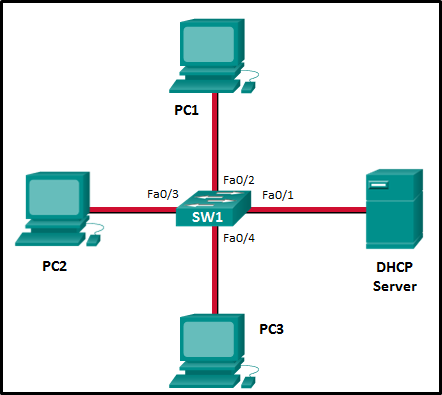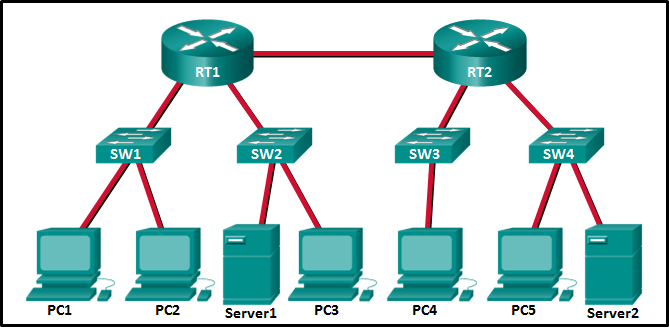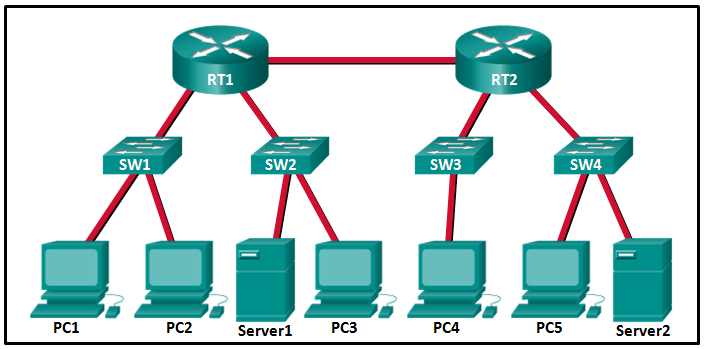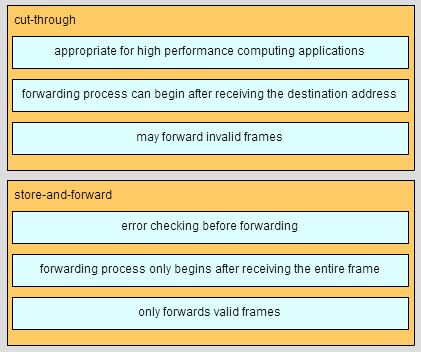Last Updated on July 5, 2018 by Admin
CCNA 2 Chapter 1
From year to year, Cisco has updated many versions with difference questions. The latest version is version 6.0 in 2018. What is your version? It depends on your instructor creating your class. We recommend you to go thought all version if you are not clear. While you take online test with netacad.com, You may get random questions from all version. Each version have 1 to 10 different questions or more. After you review all questions, You should practice with our online test system by go to "Online Test" link below.
- What is a basic function of the Cisco Borderless Architecture access layer?
- aggregates Layer 2 broadcast domains
- aggregates Layer 3 routing boundaries
- provides access to the user
- provides high availability
- What is a basic function of the Cisco Borderless Architecture distribution layer?
- acting as a backbone
- aggregating all the campus blocks
- aggregating Layer 3 routing boundaries
- providing access to the user
- A network designer must provide a rationale to a customer for a design which will move an enterprise from a flat network topology to a hierarchical network topology. Which two features of the hierarchical design make it the better choice? (Choose two.)
- lower bandwidth requirements
- reduced cost for equipment and user training
- easier to provide redundant links to ensure higher availability
- less required equipment to provide the same performance levels
- simpler deployment for additional switch equipment
- What is a collapsed core in a network design?
- a combination of the functionality of the access and distribution layers
- a combination of the functionality of the distribution and core layers
- a combination of the functionality of the access and core layers
- a combination of the functionality of the access, distribution, and core layers
- What are two advantages of modular switches over fixed-configuration switches? (Choose two.)
- lower cost per switch
- increased scalability
- lower forwarding rates
- need for fewer power outlets
- availability of multiple ports for bandwidth aggregation
- Which switch form factor should be used when large port density, fault tolerance, and low price are important factors?
- fixed-configuration switch
- modular switch
- rackable 1U switch
- stackable switch
- An administrator purchases new Cisco switches that have a feature called StackPower. What is the purpose of this feature?
- It enables many switches to be physically stacked in an equipment rack.
- It enables many switches to be connected with a special fiber-optic power cable to provide higher bandwidth.
- It enables many switches to be connected to increase port density.
- It enables the sharing of power among multiple stackable switches.
- It enables AC power for a switch to be provided from a powered patch panel.
- What is one advantage of using the cut-through switching method instead of the store-and-forward switching method?
- has a positive impact on bandwidth by dropping most of the invalid frames
- makes a fast forwarding decision based on the source MAC address of the frame
- has a lower latency appropriate for high-performance computing applications
- provides the flexibility to support any mix of Ethernet speeds
- Which type of transmission does a switch use when the destination MAC address is not contained in the MAC address table?
- anycast
- broadcast
- multicast
- unicast
- Refer to the exhibit. Consider that the main power has just been restored. PC1 asks the DHCP server for IPv4 addressing. The DHCP server sends it an IPv4 address. While PC2 is still booting up, PC3 issues a broadcast IPv4 DHCP request. To which port will SW1 forward this request?

CCNA 2 Chapter 1 Exam Answer 001 (v5.02, 2015)
- to Fa0/1 only
- to Fa0/1 and Fa0/2 only
- to Fa0/1, Fa0/2, and Fa0/3 only
- to Fa0/1, Fa0/2, Fa0/3, and Fa0/4
- to Fa0/1, Fa0/2, and Fa0/4 only
- What information is added to the switch table from incoming frames?
- source MAC address and incoming port number
- destination MAC address and incoming port number
- source IP address and incoming port number
- destination IP address and incoming port number
- What is one function of a Layer 2 switch?
- forwards data based on logical addressing
- duplicates the electrical signal of each frame to every port
- learns the port assigned to a host by examining the destination MAC address
- determines which interface is used to forward a frame based on the destination MAC address
- Refer to the exhibit. How is a frame sent from PCA forwarded to PCC if the MAC address table on switch SW1 is empty?

CCNA 2 Chapter 1 Exam Answer 002 (v5.02, 2015)
- SW1 floods the frame on all ports on the switch, excluding the interconnected port to switch SW2 and the port through which the frame entered the switch.
- SW1 floods the frame on all ports on SW1, excluding the port through which the frame entered the switch.
- SW1 forwards the frame directly to SW2. SW2 floods the frame to all ports connected to SW2, excluding the port through which the frame entered the switch.
- SW1 drops the frame because it does not know the destination MAC address.
- What does the term “port density” represent for an Ethernet switch?
- the memory space that is allocated to each switch port
- the number of available ports
- the numbers of hosts that are connected to each switch port
- the speed of each port
- ABC, Inc. has about fifty hosts in one LAN. The administrator would like to increase the throughput of that LAN. Which device will increase the number of collision domains and thereby increase the throughput of the LAN?
- host
- hub
- switch
- NIC
- What are two reasons a network administrator would segment a network with a Layer 2 switch? (Choose two.)
- to create fewer collision domains
- to enhance user bandwidth
- to create more broadcast domains
- to eliminate virtual circuits
- to isolate traffic between segments
- to isolate ARP request messages from the rest of the network
- Fill in the blank. A converged network is one that uses the same infrastructure to carry voice, data, and video signals.
- Refer to the exhibit. Fill in the blank.
There are 12 collision domains in the topology.
- Refer to the exhibit. Fill in the blank.

- There are five broadcast domains in the topology.
- Match the forwarding characteristic to its type. (Not all options are used.)
From year to year, Cisco has updated many versions with difference questions. The latest version is version 6.0 in 2018. What is your version? It depends on your instructor creating your class. We recommend you to go thought all version if you are not clear. While you take online test with netacad.com, You may get random questions from all version. Each version have 1 to 10 different questions or more. After you review all questions, You should practice with our online test system by go to "Online Test" link below.

